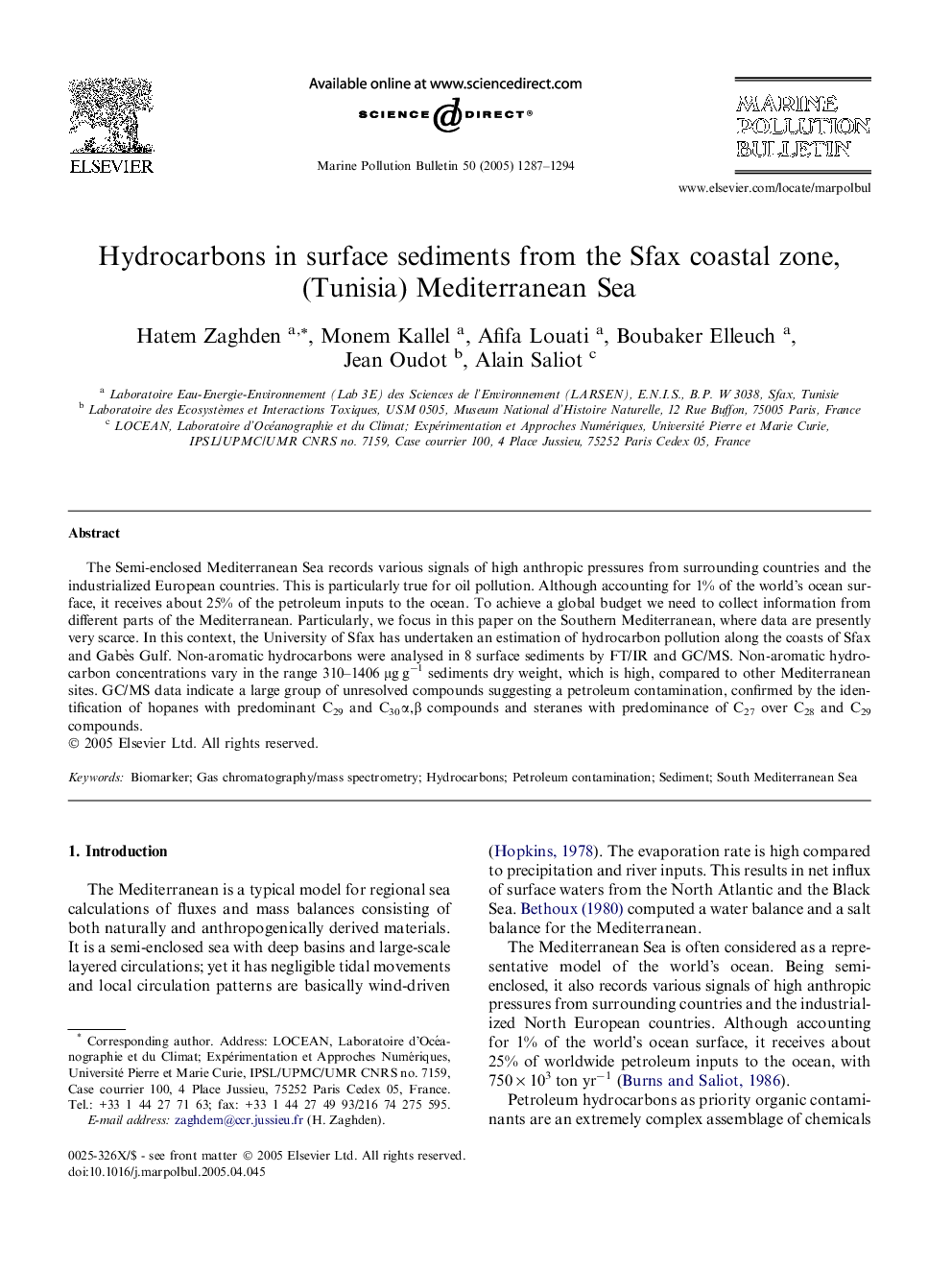| Article ID | Journal | Published Year | Pages | File Type |
|---|---|---|---|---|
| 9465999 | Marine Pollution Bulletin | 2005 | 8 Pages |
Abstract
The Semi-enclosed Mediterranean Sea records various signals of high anthropic pressures from surrounding countries and the industrialized European countries. This is particularly true for oil pollution. Although accounting for 1% of the world's ocean surface, it receives about 25% of the petroleum inputs to the ocean. To achieve a global budget we need to collect information from different parts of the Mediterranean. Particularly, we focus in this paper on the Southern Mediterranean, where data are presently very scarce. In this context, the University of Sfax has undertaken an estimation of hydrocarbon pollution along the coasts of Sfax and Gabès Gulf. Non-aromatic hydrocarbons were analysed in 8 surface sediments by FT/IR and GC/MS. Non-aromatic hydrocarbon concentrations vary in the range 310-1406 μg gâ1 sediments dry weight, which is high, compared to other Mediterranean sites. GC/MS data indicate a large group of unresolved compounds suggesting a petroleum contamination, confirmed by the identification of hopanes with predominant C29 and C30 α,β compounds and steranes with predominance of C27 over C28 and C29 compounds.
Related Topics
Physical Sciences and Engineering
Earth and Planetary Sciences
Oceanography
Authors
Hatem Zaghden, Monem Kallel, Afifa Louati, Boubaker Elleuch, Jean Oudot, Alain Saliot,
